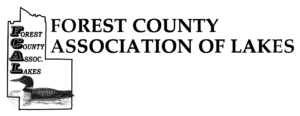Algal Blooms in Northern Wisconsin
Northern Wisconsin, known for its clean lakes and rivers, is facing an environmental challenge that threatens its natural beauty and ecosystem: algal blooms. These blooms occur when algae, microscopic organisms found in water, grow uncontrollably. While algae are a natural part of aquatic ecosystems, their excessive growth can have harmful consequences for both the environment and the communities that rely on these waters. The primary driver of algal blooms is nutrient pollution, particularly from phosphorus and nitrogen. These nutrients often enter water bodies through runoff. Urban stormwater runoff, containing lawn fertilizers are a big contributor to the problem. Additionally, climate change plays a significant role. Warmer water temperatures and longer growing seasons create ideal conditions for algae to thrive, worsening the frequency and intensity of blooms. Wake boats can also add to the issue, with their powerful systems that displace a lot of water and create a larger thrust directed at the lake bottom. While this can destroy habitat, it can also stir up the sediment on the bottom of our lakes that was once buried or settled and release phosphorous and nitrogen back into the aquatic system. Releasing these nutrients allows them to be consumed by harmful bacteria, allowing the bacteria to grow and reproduce. Algal blooms can have far-reaching impacts on aquatic ecosystems, human health, and local economies. When algae grow excessively, they consume large amounts of oxygen, leading to “dead zones” where fish and other aquatic life cannot survive. Some types of algae, such as cyanobacteria (blue-green algae), produce toxins that are harmful to humans, pets, and wildlife. These toxins cause skin irritation, respiratory issues, and even severe illness if ingested. Beyond health concerns, algal blooms affect the recreational value of northern Wisconsin’s waters. Popular activities like swimming, fishing, and boating become unsafe or unpleasant when blooms occur. The unsightly green scum and foul odors drive away tourists, impacting local businesses that depend on outdoor recreation. Recently, our office was out on a site visit and came across what we thought was blue-green algae. We contacted the county Health Department and they were able to confirm that it was blue-green algae. Efforts to mitigate algal blooms in northern Wisconsin focus on reducing nutrient pollution. Lakefront landowners and organizations are promoting sustainable practices along our lakes and rivers, such as encouraging the use of native plants along shorelines and on properties to reduce runoff. Public education campaigns also play a vital role in raising awareness about the importance of water quality. While algal blooms are a complex issue, collective action can make a difference. By adopting eco-friendly practices and supporting conservation initiatives, residents and visitors alike can help preserve northern Wisconsin’s cherished waterways for generations to come.
Conservation Corner is a weekly article produced by the Forest County Land Conservation and Land Information Department. For more information contact Lucas O’Brien, Forest County Land Conservation Technician at 715-478-1387 or by e-mail at

